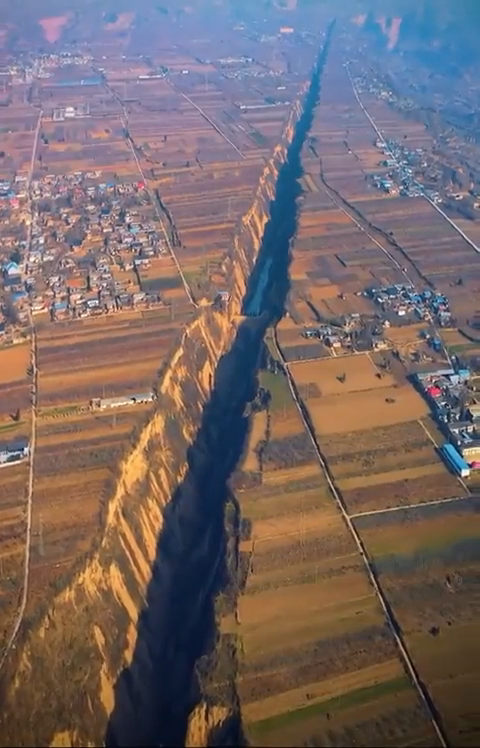Plate Tectonics: The Shanxi Rift System, also known as the Fen–Wei Rift System, is a significant geological feature in northern China, forming the eastern margin of the Ordos Block.
Geographical Extent:
This rift system stretches over approximately 600 miles from the Qinling orogenic belt in the south to the Yinshan-Yanshan orogenic belt in the north. It varies in width from 25 to 75 miles.
See video:

Tectonic Activity:
The system is characterized by active extensional tectonics, which means the crust is being pulled apart, leading to the formation of rift basins. These basins are arranged in an echelon pattern, indicating a complex interplay of tectonic forces.
Major Basins:
Weihe Basin: Known for its half-graben geometry, it thickens southwards with large normal faults defining its southern boundary against the Qinling Mountains.
Sanmenxia Basin: Located between the Qinling orogenic belt and the Zhongtiao Mountains, it shares a geological history with the Weihe Basin, featuring sedimentary rocks from the Eocene period.
Linfen Basin: Situated north of the Yuncheng Basin, it’s controlled by the Louyunshan Fault on its northwest side.
Geological History:
The initiation of the rift system is traced back to the Eocene period (about 50-35 million years ago), possibly triggered by the subduction of the Izanagi-Pacific ridge. It experienced reactivation around 8 million years ago, influenced by the India-Eurasia collision and the eastward extrusion of South China.
Current Interest and Research:
Discussions on social media and various online articles have highlighted the Shanxi Rift System for its geological wonder, particularly the rift valley in Pinglu, Shanxi. This area, part of the Loess Plateau, showcases dramatic geological features formed by crustal movements, attracting attention for its scenic beauty and geological significance.
Cultural and Scientific Impact:
While primarily a geological feature, the Shanxi Rift System’s influence extends into cultural aspects, as seen in references in video games like “Black Myth: Wukong,” indicating its integration into broader cultural narratives.
Environmental and Tourism Aspect:
The scenic beauty of areas like the rift valley in Pinglu has been highlighted around the internet, suggesting a growing interest in geological tourism. This could imply efforts towards conservation, education on geological processes, or simply appreciation of natural landscapes.
The Shanxi Rift System, therefore, not only represents a crucial area for understanding tectonic processes in China but also serves as a point of interest for cultural, environmental, and touristic activities. Its study continues to evolve, providing insights into Earth’s dynamic crustal movements and their implications on the landscape and human culture.
photo credit – Tuhaf Ama Gerçek (Plate Tectonics: The Shanxi Rift System)






